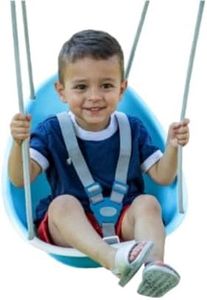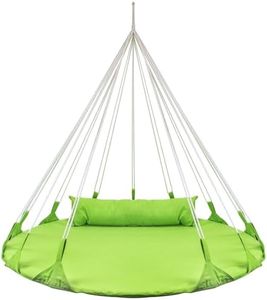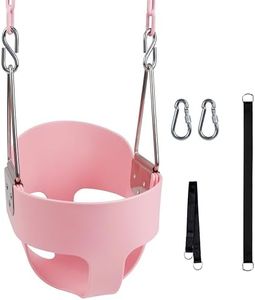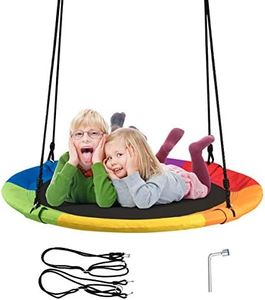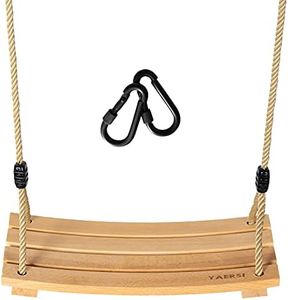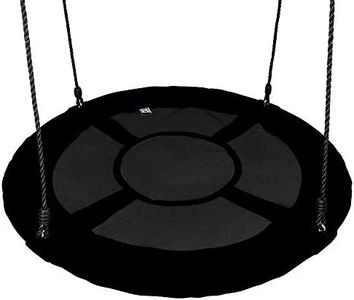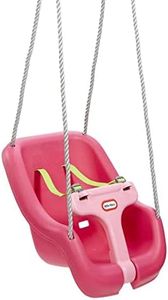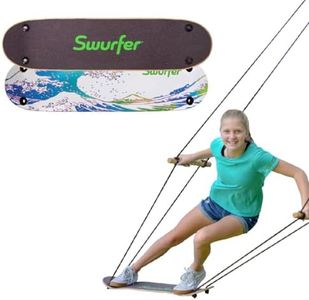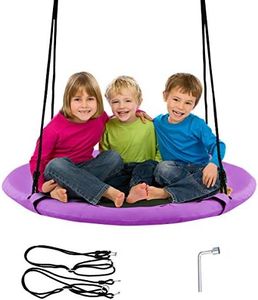We Use CookiesWe use cookies to enhance the security, performance,
functionality and for analytical and promotional activities. By continuing to browse this site you
are agreeing to our privacy policy
10 Best Tree Swings
From leading brands and best sellers available on the web.Buying Guide for the Best Tree Swings
Choosing the right tree swing can turn any backyard into a joyful and relaxing place for both kids and adults. When deciding on a tree swing, it's essential to think about who will be using the swing, where it will be installed, and what kind of experience you want—be it gentle relaxation or active play. Focusing on a few key features will help you ensure safety, comfort, and enjoyment for years to come.Weight CapacityWeight capacity refers to the maximum amount of weight the swing can safely hold. This is crucial for safety, as exceeding the limit can lead to accidents or damage. Swings usually come rated for children, adults, or multiple users. Light-duty swings typically handle up to 100 lbs, good for younger children, while medium-duty models (100-300 lbs) can accommodate older children and many teens. Heavy-duty swings (over 300 lbs) are suitable for adults and shared use. Consider who will primarily use the swing to decide the appropriate capacity—always pick a swing with extra margin if you expect a range of ages and weights.
Swing Seat TypeThe seat type affects comfort, safety, and the kind of swinging experience. Popular options include flat wooden seats, disc (round) seats, webbed net seats, or soft fabric platforms. Flat seats offer classic comfort and suit most users, disc seats provide more active play, while webbed or platform swings can hold more than one person or allow lounging. Younger kids often feel safest on flat or bucket-shaped seats with good support, while older children and adults may prefer the freedom of disc or webbed swings. Choosing the right seat depends on the main users’ ages and preferences.
Rope or Chain QualityThe material and thickness of the rope or chain connecting the swing to the tree determines both safety and durability. Natural fiber ropes look classic but may weather quickly outdoors, while synthetic ropes resist rot and last longer. Chains are the strongest and most durable but might need covers to be comfortable to grip. Thicker ropes generally offer better strength and comfort. If you expect heavy or frequent use, opt for strong synthetic ropes or coated chains; for occasional, light use, natural ropes may suffice. Always ensure the length fits your tree’s branch height and that the rope or chain is rated for outdoor weather.
Attachment MethodHow the swing attaches to the tree is a key safety point. Some models come with secure straps or hardware, while others require you to purchase them separately. Straps designed to hug the branch reduce harm to trees, while metal hardware (like eye bolts) provides extra security. Make sure the chosen method is compatible with your tree branch’s thickness and health. For regular use and adult weight, opt for professional-grade attachments; for seasonal or temporary swings, strong straps may do the job. Never compromise on a secure and tree-friendly attachment.
Weather ResistanceTree swings are exposed to sun, rain, and temperature changes, so their durability depends on weather resistance. Materials like treated wood, rust-proof metals, and UV-resistant ropes or fabrics last longer outdoors. If you live in a harsh climate or want to leave the swing up year-round, prioritize weather-resistant materials to avoid rapid wear and maintenance work. For occasional use or sheltered locations, standard materials might suffice, but regular swings benefit from upgraded weatherproofing.


